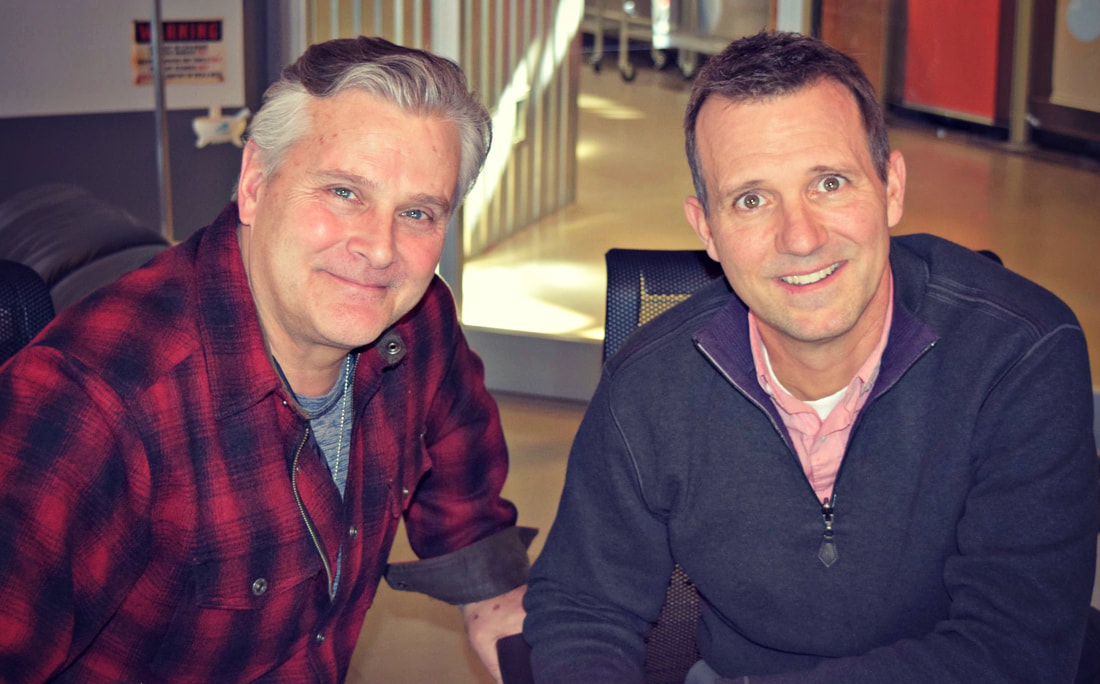|
Workplaces are changing – and technology is evolving to support safety cultures that empower and engage workers. Whether it’s the generational handoff from Baby Boomers to millennials, or the explosion of data driven techniques for predictive analysis, transformation in safety is happening from both a digital and a human perspective. PPE manufacturers sit squarely in the middle of this evolving safety landscape, and no company is more ahead of the curve in terms of adapting if not influencing the industry than Ergodyne, known for its top-flight, "battle-tested” Tenacious Work Gear®. Recently, Corvex CEO and President Ted Smith sat down with Tom Votel, CEO of Ergodyne, for a frank discussion about the future of workplace safety. After a career span of more than 35 years in the workplace safety industry, Votel is committed to developing products that not only boost productivity, but keep each and every worker out of harm’s way. Read on for the first in a two-part series encapsulating the conversation between two major influencers in the safety industry, as they discuss the future of connected safety, and the role that technology and PPE will play toward a worker-powered safety culture. Ted Smith: Tom, we’re all talking about what’s around the corner for safety. From your perspective, what are health and safety programs getting right? Tom Votel: Companies that are truly committed to safety are VPPPA members and others who have made a serious commitment to safer workplaces. As far as recent things that have happened from a standard-setting perspective, the silica standard that OSHA recently promulgated is one important example. From an Ergodyne-centric perspective, OSHA has a public service guidance on heat stress that we think is very important. A lot of smart companies have been active in developing best practices around those suggestions. I think it’s also important to mention the objects at heights standard. We’re sensitive to this because Ergodyne has solutions for that category. This is a significant, ancient problem and until very recently there has been no coordinated, organized approach around resolving those issues. Now there is one from a product perspective and soon, maybe sometime early this year, there will be a new ANSI standard (ANSI 121) which will be promulgated and will give great best practices guidance on that issue. In addition, there is a walking surfaces standard that just came out that is providing additional guidance for workers and employers on surfaces at heights. These are all great steps forward from a standards-perspective, and changes that have been needed for a long time. TS: Where do you think the safety industry is performing right now in this space? TV: I think there is a lot of change, and the nature of work is changing. Automation is becoming a much more significant opportunity in the sense that it reduces a lot of backbreaking work that workers used to do. On the other hand it’s a challenge as it involves workers working with and around machines, which presents a whole new list of concerns. I should also mention the fact that automation will likely mean fewer workers and workers doing different things. Workers not having to do backbreaking work, but doing work that requires them to be more sophisticated, more digital and more intelligent. This has already begun to change but I think in the next 10 years it will change even more radically. TS: What are the factors that must be in place to take safety to the next level at any organization? TM: I think safety is a conversation. When it’s done in the best way, it should be a bilateral activity between the worker and the employer. Many of the things we’re talking about with Corvex, for example, are enabling safety to move more rapidly toward that state. There is this idea, again, of work changes. You hear a lot that people are our most valuable asset. I think good people do believe that, but there are a lot of times when organizations are still cutting corners. We live in a competitive world where employers are managing budgets and real world issues. When it comes to safety, however, I think people are increasingly realizing that it goes far beyond how much was spent on a pair of gloves. It is more about how we are driving compliance. Are we having the conversation with our workers and are our workers actually engaged in the process to help us make safety better? Frankly, I think it’s up to employers to create the conditions and the culture that allow that to happen. TS: Do you think the adage “For every dollar you spend on safety you get $4 in return,” has held its own? TV: I’m not specifically aware of that statistic but it sounds about right. You’re taking safety from reactive to proactive, and those are investments employers have to make in advance of issues. Sometimes that’s a tough change to make. The good news is that more and more employers realize they have to make those kind of investments when it’s an employees’ market, meaning a really tight labor market. Workers will choose a safer workplace and employers are realizing that safety gives them an edge to attract and keep people. It’s become bragging rights for employers to talk about and that is really healthy and positive. TS: You’ve mentioned the tight labor market and I hear that quite often, and about some of the struggles with bringing in younger employees and keeping older employees. In your business have you changed your marketing and thought process attracting younger workers? Are there any trends or things that you see from a PPE perspective that will engage them and help with that situation? TV: We don’t have production or factory workers here, but I am very sensitive to that issue because of how it relates to safety, and actually how it translates to the rest of the economy as well. About 50% of the safety managers are going to be replaced in five years. That’s a really significant deal. You have this transference of leadership. You have a future leader in safety who is a digital native. They learn differently - in a more sophisticated way on one level, but also in smaller bites which changes training significantly. Most importantly, you have a community of leadership and workers who are more naturally digitally native, so relating to them in that way is going to be absolutely critical from a safety perspective. The good news is that the technology is there to allow that to occur. There is a really nice convergence of this changing of the guard along with technology enablement. Of course us Baby Boomers are going to have to shepherd that and do the right thing. We need to make a commitment to help the next generation of leadership harness technology and advance the cause of safety. TS: Along those lines, everyone is talking about the connected worker, industry 4.0 and smart factories. Where do you see the intersection of PPE, data and safety occurring? TV: The essential ingredient there is technology. But you have to have a culture that allows a platform to do what it needs to. You need a technology that allows for bilateral communication and engagement. The Corvex platform specifically allows for that type of communication and promotes strong worker engagement. That’s both profound, and unusual in our industry. The other big thing is real time and to me, that’s a game changer, in the sense that you have a worker who can immediately engage with his or her manager and tell them, “There’s an unsafe situation here.” We’ve talked to prospective employers about the work we’re doing leveraging the Corvex platform. At a Fortune 100 company, the safety director mentioned he would have to review this type of data 24/7, and he wasn’t afraid of it. It was actually a positive thing. He realized that this approach could be really enabling. With the type of worker feedback from this platform, this particular safety manager understood that he could stanch or avoid issues, and prevent a really serious safety situation by fixing it almost immediately. That’s pretty powerful. From a safety manager perspective, it’s being able to engage with workers if something unexpected happens, even something like weather challenges. They can also push learnings and extemporaneous things that workers need to know while they are on the job site actually working. This is an exciting and new kind of communication between worker and manager. Stay tuned for the second half of this insightful interview with Ergodyne CEO Tom Votel, as he talks more about the changes happening in our industry, and the role that connected technology will play in the next evolution of worker-powered safety Comments are closed.
|


